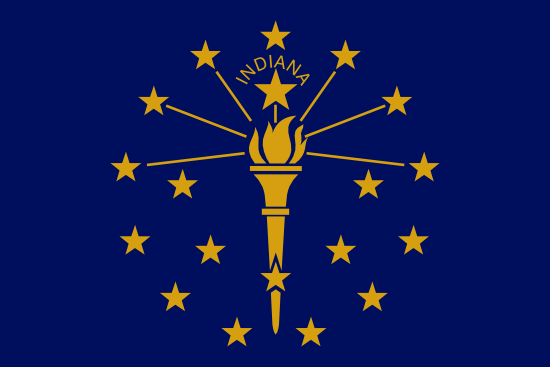
Indiana
- Statehood Year:
- 1816
- Capital:
- Indianapolis
- Largest Cities:
- Indianapolis, Fort Wayne, Evansville
- Abbreviation:
- IN
Indiana is a state in the Midwest region of the United States, known for the Indiana Dunes, limestone caves, and rolling farmland. It has a population of 6,968,420, making it the 17th most populated state in the country. The capital city is Indianapolis. Indiana has a manufacturing-focused economy with growing tech sector.